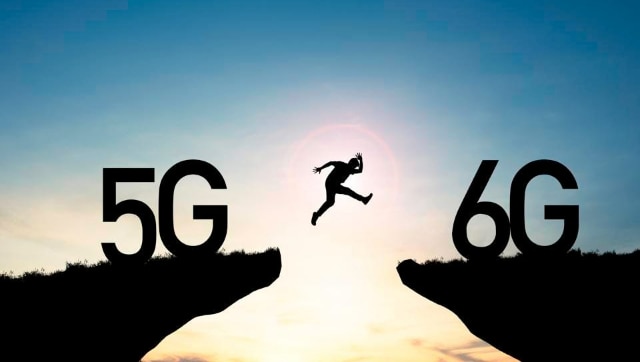Human body can help power 6G devices as antennas in future, boost signal, shows study – Technology News, Firstpost
Mehul Reuben DasJan 09, 2023 19:47:57 IST
A team of researchers at the University of Massachusetts Amherst has claimed that in a study they have conducted, they found that the human body could be a useful tool to harvest waste energy and use it to power devices in the future, including those used for 6G, the next generation of wireless communication. The human body can act as range extenders, with each individual body, acting as antennae.
Engineers at the University of Massachusetts Amherst have discovered that the human body can safely collect enough electromagnetic energy or RF energy that it can power minor IoT devices, and even act as antenna for 6G devices in the future
The benefits of 5G wireless connectivity, which has been implemented in several nations worldwide, are just now starting to be felt by the general public. However, the following generation, known as 6G, promises data rates up to 1000 times quicker, as well as a tenth the latency of 5G.
With its successor, an even greater number of devices and sensors are anticipated to become online, ushering in a new phase in the Internet of Things (IoT) era that is anticipated to start with 5G. The development of Visible Light Communication (VLC), a kind of wireless fibre-optic network, is thought to be responsible for the greater communication rates expected in 6G.
What is Visible Light Communication?
In its most rudimentary form, Visible light communication (VLC) is a wireless method that uses light emitted by LEDs to deliver networked, mobile, high-speed communication similar to Wi-Fi, leading to the term Li-Fi. It can be used as a standalone solution or in a supplementary role to radio-frequency (RF) or cellular network communication. The basis of the technology involves switching LEDs ON and OFF within nanoseconds at a very high frequency.
As the visible light spectrum is 10,000 times larger than the radio frequency spectrum, VLC is regarded as a solution to RF bandwidth limitations. The industry has generated very high data transmission rates, making it competitive.
Though the signal cannot penetrate obstructions such as walls, a direct line of sight is not required as long as light is reflected from other surfaces. The LED lighting must be ON for the signal to transmit but can be dimmed to very low levels. VLC has an advantage over Wi-Fi in that transmission does not cause electromagnetic interference.
How does Visible Light Communication work?
When it comes to transferring information, VLC functions much like radio transmissions, with the exception that it does so by using light from light-emitting diodes (LEDs). According to Jie Xiong, a professor of information and computer sciences at the University of Massachusetts Amherst, in a VLC array, one LED has the capacity to turn on and off a million times per second.
We already have the infrastructure in place to implement this technology since LED lighting is used in all of our buildings, businesses, streets, and cars. In addition, any device with a camera, such as a laptop, tablet, or smartphone, may act as a receiver and enable the technology.
These LEDs also emit side-channel radio frequency (RF) or radio waves which is an energy leak, and this could be harvested to make VLC devices work.
Harnessing RF Leakage
Xiong and his colleagues set out to create an antenna that might capture this energy being released. They used copper wires that were wound into coils for their antenna design, which were afterwards put to the test for their energy-gathering capacity. The researchers discovered that the antenna’s capacity to gather energy increased when it was connected with another item, regardless of the coil’s thickness or the number of times the copper wire was twisted.

Apart from keeping the antenna in contact with different materials like wood and steel, the researchers also kept it in contact with objects like walls, tablets, phones, and even laptops to see how much energy could be harvested. The team found that energy collection increased with electronic gadgets but was highest when the coil was in touch with the human body.
Apart from keeping the antenna in contact with different materials like wood and steel, the researchers also kept it in contact with objects like walls, tablets, phones, and even laptops to see how much energy could be harvested. The team found that energy collection increased with electronic gadgets but was highest when the coil was in touch with the human body.
{n.callMethod? n.callMethod.apply(n,arguments):n.queue.push(arguments)}
; if(!f._fbq)f._fbq=n;n.push=n;n.loaded=!0;n.version='2.0'; n.queue=[];t=b.createElement(e);t.async=!0; t.src=v;s=b.getElementsByTagName(e)[0]; s.parentNode.insertBefore(t,s)}(window,document,'script', 'https://connect.facebook.net/en_US/fbevents.js'); fbq('init', '259288058299626'); fbq('track', 'PageView');
For all the latest Technology News Click Here
For the latest news and updates, follow us on Google News.
